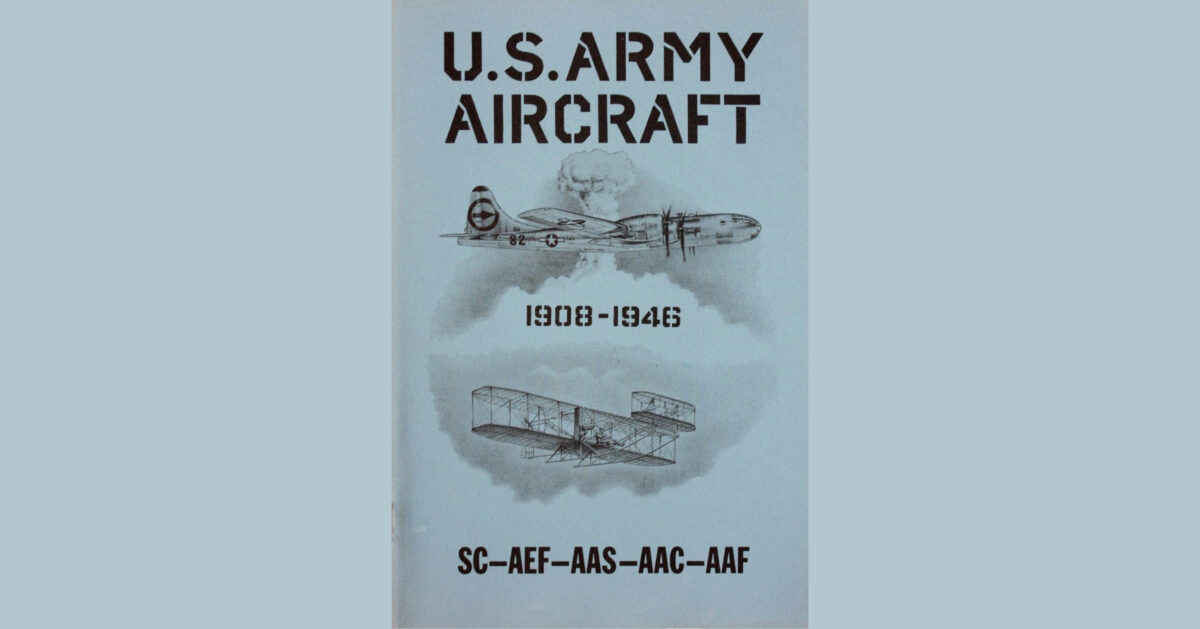U.S. Army Aircraft 1908-1946: SC-AEF-AAS-AAC-AAF by James C. Fahey
A severe disappointment for James Fahey turned out to benefit future historians. After medical problems disqualified him as a naval aviator, he served in the Merchant Marine—but opted to write about the U.S. Navy. In 1939 his first volume of wonderful reference works, The Ships and Aircraft of the U.S. Fleet, appeared.
A true purist, Fahey did not trust other publishers with his work, instead creating his own books, small 6-by-9-inch softcovers that ran to some 60 pages and were packed to the gills with neatly organized information. His triumphant 1945 Victory Edition of Ships and Aircraft of the U.S. Fleet grew to 96 pages. It was not hugely profitable at first, when his books sold for 50 cents. Fahey reportedly was in the habit of going to work with exactly two nickels in his pocket, one for the subway ride out and one for the ride back. If—and it was a big if—he happened to sell a book, he could buy lunch. World War II made his project a financial success, but there’s no doubt that Fahey, who died in 1974, would be delighted to see his original books selling today for $36.95.
Fahey expanded to aviation with the publication of U.S. Army Aircraft 1908-1946, which became a primary source for aviation writers. The photos were typically small, 5/8ths inch by 3 inches, and the type was tiny. But his densely packed tables were superb. He divided U.S. Army Aircraft 1908- 1946 into the periods covered—Signal Corps, American Expeditionary Force, etc.—then listed the aircraft by manufacturer and model. In the Signal Corps–Air Service period, for example, his compact tables provided columns for year first ordered and delivered, number procured, crew type, gross weight, dimensions (span and length), engines (number per airplane and builder), horsepower, top speed and remarks. Fahey packed his remarks column with useful information. If you compare his tables with the specs provided in most any book, magazine or website today, you’ll note he doesn’t list range or maximum altitude, but includes much more than is generally found. All of the above and more are in the first nine pages—a treasure trove for writers hard up for accuracy, as we all were at the time.
Fahey continued to publish after the war, with eight of his editions focusing on ships and two on aircraft. The second of these was USAF and United States Army Aircraft 1947- 1956. Naval Institute Press published his eighth and final edition in 1965. Fahey’s work was continued by John Rowe and Samuel L. Morison for the ninth and tenth editions.
Norman Polmar took over from the eleventh edition to the present. The modern editions by Polmar are valued throughout the world, regarded with the same admiration earlier writers had for Fahey’s useful little books. These eight editions are much expanded books, larger and in hardback, with a much broader point of view. Polmar is now working on his ninth, a ships and aircraft version, to be published in late 2011.
Originally published in the November 2010 issue of Aviation History. To subscribe, click here.





